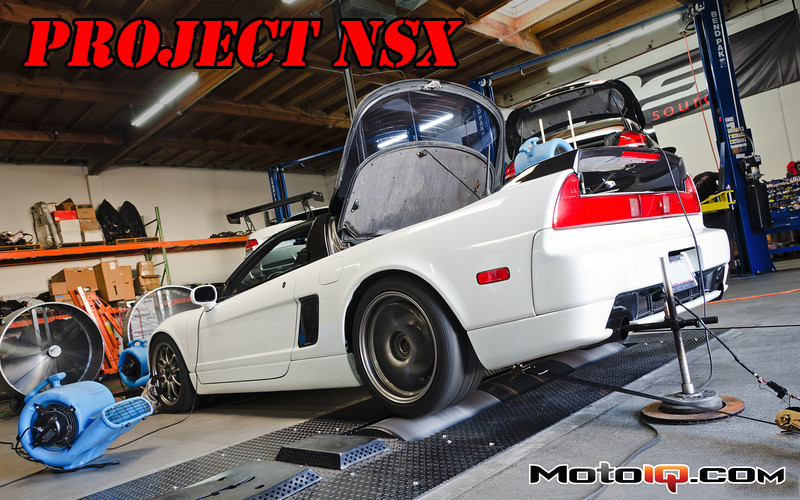


We took project NSX to our friends at European Auto Source in Anaheim, CA to turn the rollers of their Dynojet 224xLC load-bearing dyno. This is the same dyno that we have been using for Project E90 M3 and the most recent pull in Project E36 M3 (Silver) at Roush Yates in North Carolina. EAS specializes in BMW and Mercedes Performance cars, suspension and engine tuning, track day support and anything you might need. However they work on all sorts of cars with performance oriented customers.

When analyzing the dyno chart, our torque levels between 3,200 to 4,900rpm seem to follow the loss that Jon Kuroyama’s dynochart displayed in the VVIS-delete graphs, however the combination of our parts have a pretty strong torque level from 5,000rpm to redline, even though power does start to fall off at 7,000rpm.
I thought it would be fun to overlay Project NSX’s dyno run with a few notable production cars that I keep mentioning which also have flat torque curves and redlines higher than 8,000rpm. With the help of EAS Tuning, they supplied us with dynos from a bone stock 333bhp E46 M3 and a bone stock 414bhp E90 M3 for comparison.

Comparing our modified NSX to stock cars may be a bit apples to oranges, however I also thought it would be fun to compare Project NSX to a couple other cars: Project E36 M3 (Silver) and Project E90 M3. While these all have varying degrees of modifications, you can read more about each one and it’s a bit fun to bench race with some of our other projects.

Our cammed Project E36 M3 (Green) has quite a bit more low-end torque out of its 3.2L motor, but while it’s strong down low, it does not rev as high and by 6,250rpm, Project NSX (Blue) leaves it in its dust. Project E90 M3 (Red) is a bit of a gun in a knife fight in this comparison as it’s in a completely different realm than the other two. However all three cars have a fairly linear power bands and are just a blast to drive.
Our newly found 269whp propelled Project NSX to a 1:58.994 at Buttonwillow 13CW on NT05 street tires, which was covered in Part 4 – We Track Test KW Supension, Volk Wheels, and Nitto Tires in Pursuit of a Track Record. Be sure to stay tuned for the exciting next installments of Project NSX!
Sources:
Jon Kuroyama




1 comment
I eliminated the VVIS plate on my NA 1 C30 and cut the splitter out of the post throttle body area. I also blended the intake runners flush to the floors aand increase vertical radii. Finally I accentuated cross flow alignment with more discrete cutting – which is due to metal thickness somewhat limited but nonetheless noticeable in appearance. Having run the car on dyno prior to this it produced RWHP just under 270 with open headers through glass dual outlet mufflers. It also made 203 RWft.#s from 5300 to 6500 rpm.
After the intake trick the car performed better with restrictor tips in the mufflers than without prior to the intake mod. The low and midrange are unaffected, but from 7000 rpm to 8000 rpm the revs come much quicker. My guess is with restrictor tips out there is likely 8 – 10 more RWHP.
The motor is now out for rebuild. I will be porting the heads mildly which means a primary focus on deep unshrouding of the valve pockets and floors with more emphasis on the exhausts. While I could add a camshaft set, there is room in the heads for 10% better flow with an average of less than .5mm metal removal and improved contour below the stem boss.
Going with a 3.2 liter overbore kit and the aforementioned mods, it is easy to imagine 300 rwhp , so that is what we are shooting for. I found the JDM short transmission gears have drastically reduced the 0 -60 time bu at least 1/2 second and put me at the torque peak a couple hundred feet before the trap in fourth gear based on the engine before teardown. I hope the next test will reveal a livelier performance.